SUR brings Malaga's most rebellious contemporary art to the forefront
Darko, Alejandro Montiel, Zoilo Blanca, Vanessa Morata, Andrea Reina, Pedro Hoz, Ana Pavón and Paloma de la Cruz feature in the newspaper's first pop-up exhibition, sponsored by Fundación Unicaja and Cervezas Victoria
It only lasted two hours. Like any play, concert or live performance. Because that's what this ephemeral exhibition was: a real show. SUR held its first pop-up exhibitionon Thursday: Rebelión en la Fábrica (Rebellion in the Factory), displaying the most rebellious contemporary art made in Malaga. It features eight artists of varying generations and styles, all united by their ambition and personal stamp.
From the reinvented classicism of Alejandro Montiel and Zoilo Blanca to the colour of Vanessa Morata, through to the abstraction of Andrea Reina, the bodies of Pedro Hoz, the textile painting of Ana Pavón and the formats that combine visual art and sculpture of Paloma de la Cruz and Darko. This line-up gave an insight into the diversity of the current art scene in Malaga. The exhibition, held at the Victoria brewery, opened and closed on the same night and was one of SUR newspaper's most innovative initiatives.
More than a hundred people attended the event, which, in keeping with the spirit of both the exhibition and venue, was entitled Rebellion in the Factory. The artists themselves took the floor to explain the workings and motivations behind their respective pieces. It was even said that the exhibition, presented by SUR's Regina Sotorrío and Alberto Gómez, showed the newspaper's commitment "to Malaga talent and the arts". A "crazy" idea that soon gained the sponsorship of Fundación Unicaja and Cervezas Victoria, and the collaboration of Japón Montajes de Arte.

The factory's own furniture served as a display for some of the works, although others didn't need it. This was the case for the work that began the artistic tour, located in the middle of the floor of the exhibition room. The clay piece with the recognisable stamp of Paloma de la Cruz (Malaga, 1991), recently arrived from Madrid where it was displayed at the Casa Velázquez.
Sotorrío said that De la Cruz "has reinvented the technique of ceramics". De la Cruz demonstrates this reinvention herself, revisiting the origins of her work: the Andalusian tradition of tiles - although in her case, craftsmanship and art directly intersect.
"I treat raw clay like skin that regenerates and changes, I work with ceramics with the idea of a body," explained the creator, who moulds each tile individually by hand to form the entire piece - halfway between visual art and sculpture. In yesterday's exhibition she alluded to her concept of art, the piece entitled: De Aquella Masa Corporal II (From That Body Mass II).
Poetry by María Zambrano
Young painter Andrea Reina (Malaga, 2000) brought a piece from her first solo exhibition in Rincón de la Victoria to Rebelión en la Fábrica. Her powerful canvas, Control y Redención (Control and Redemption) is "an abstract and watered-down work that takes us back to its origins with minimal strokes and transparencies," as Reina described it. The work is loaded with meaning to reach the spectator, emerging from "traumatic episodes both personal and collective, that we women in society have gone through". Fascinatingly, instead of starting from sketches, she said "I need to be around the canvas establishing a kind of dance to let everything flow". It is quite a spectacle to see this artist in her studio while she creates pieces such as this one - inspired by María Zambrano's work El Agua Ensimismada (Self-absorbed Water).

The baton was passed from the youngest artist to a veteran of the collection, Alejandro Montiel (Málaga, 1972), with his striking work Landstrange. Montiel plays with elements of classical art, such as the more academic female nude, which he juxtaposes with strange elements - as the title suggests - for example, a landscape that could well be Pyrenean but is accompanied by a motel sign on Route 66. "The work has Spanish and American elements in it, a style that I like to play with, but my intention is to attract visually, not to scandalise or provoke," said the artist about a work that, as Regina Sotorrío said, leaves no one indifferent.
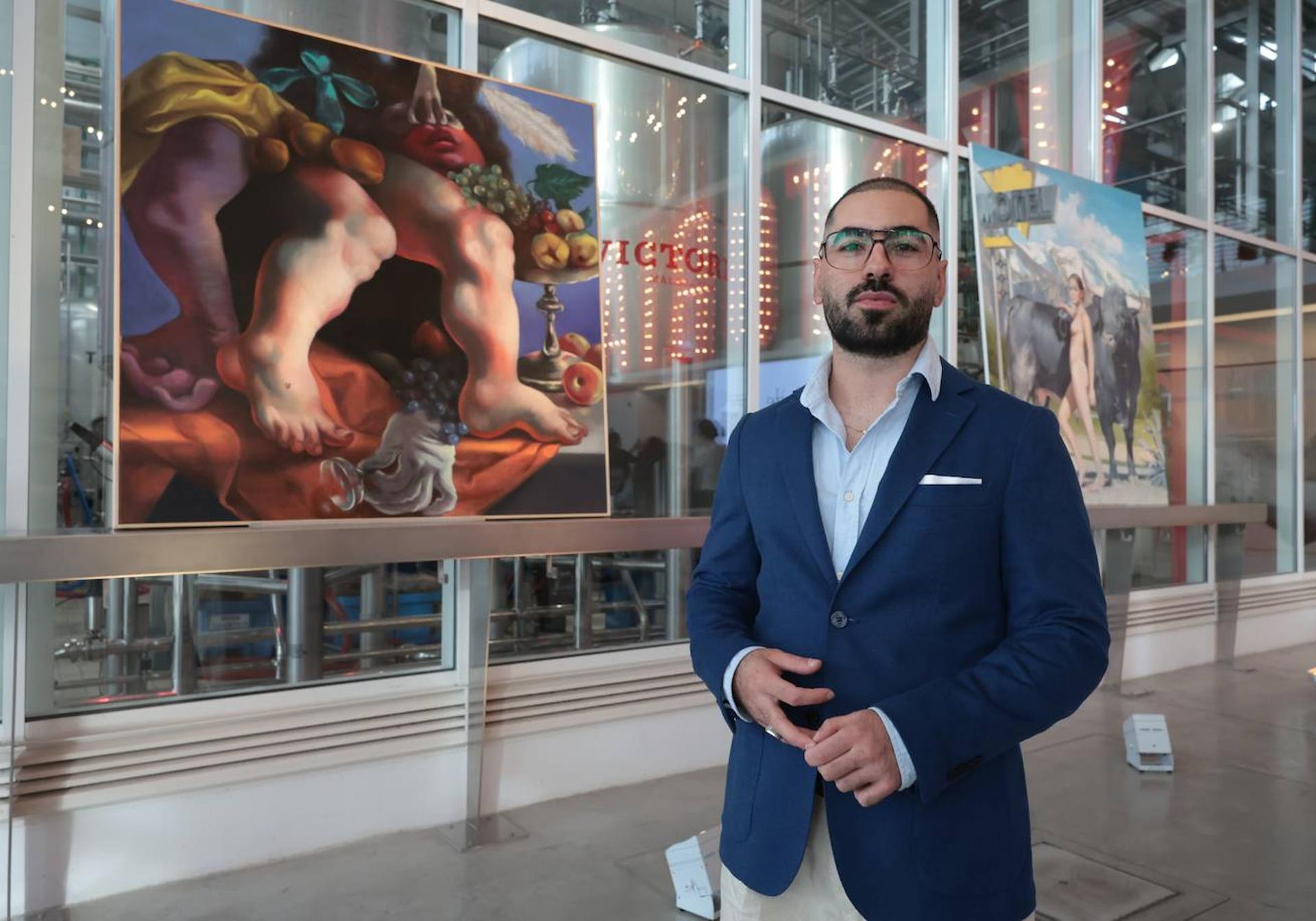
The next artist on the agenda, Zoilo Blanca (Málaga, 1997), brought one of his signature still lifes that mix the sinister and the pleasant, the baroque and the modern, with his humour and exquisite brushstrokes.
"I remake human still lifes based on existing works by mixing fruit with parts of bodies that can induce comedy," said the artist. Paying tribute to his father, painter Antonio Blanca Sánchez, he confirmed that he never went to art school and "everything I know about painting I learned from him".
Blanca also took the floor to speak on behalf of studio partner Pedro Hoz (Málaga, 2000), who was unable to attend due to illness. Hoz was described as an "expert in exploring the human anatomy with a pop touch", the two artists continue to share their studio space and their artistic opinions: "We criticise each other every day, but we help each other a lot."
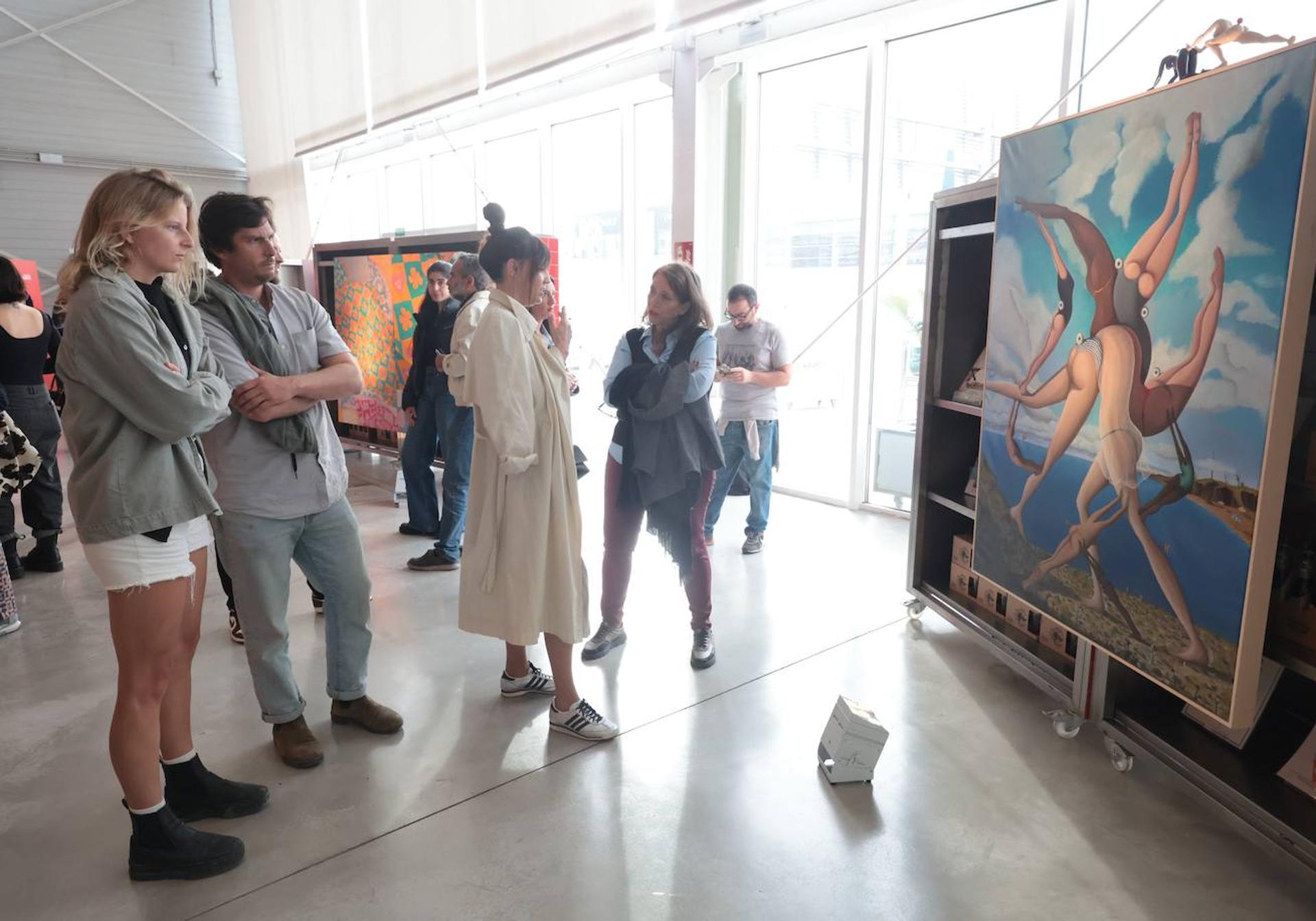
The textile-based art of Ana Pavón (Malaga, 2000), another of the youngest members of the group, appeared in the exhibition with Miss Me, a piece that she defined as "a declaration of my pictorial activity and what I'm trying to make". She tries to capture the spectator through "my own imagination in which there are only prints created by me" with the aim of "drawing attention to the sensitive and the poetic". An intriguinging parallel with the poetry that also inspires Andrea Reina, albeit in their different styles.
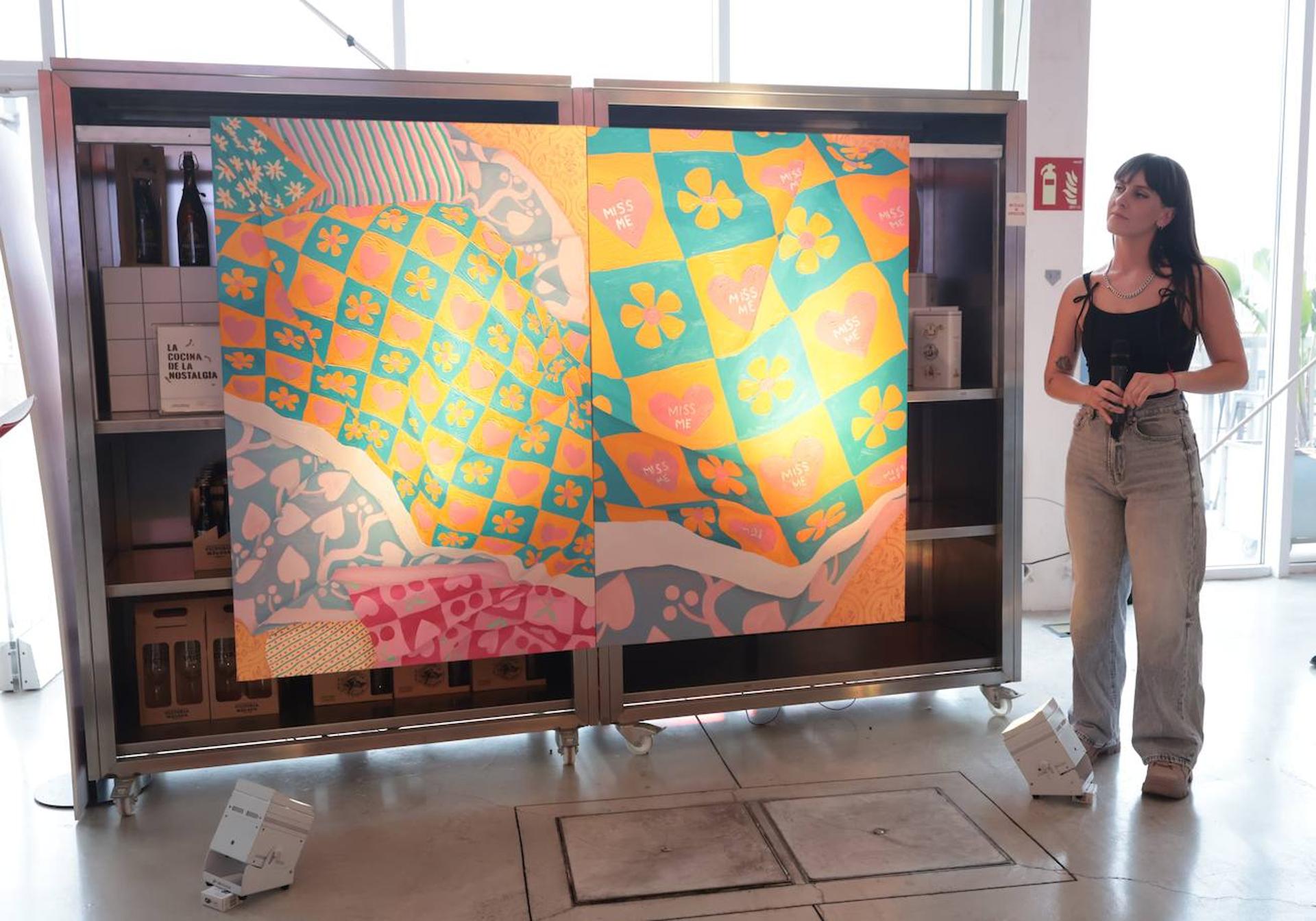
Colours to finish
Next up was Darko, one of the most respected urban artists, who turned from graffiti to painting a decade ago. This has meant that neither one nor the other considers him as part of the club, he told us jokingly. His work continues to emerge from the street, as he showed with Entropia (Entropy), a triptych on wood collected from the rubbish and revitalised with spray paint. "I'm very detached from what I do, because as a graffiti artist when you work on the street you lose contact with what you've created, so I'm more about enjoying the process. I really enjoy painting," said Darko, whose colours competed with the final artist in the pop-up exhibition, Vanessa Morata (Málaga, 1992).
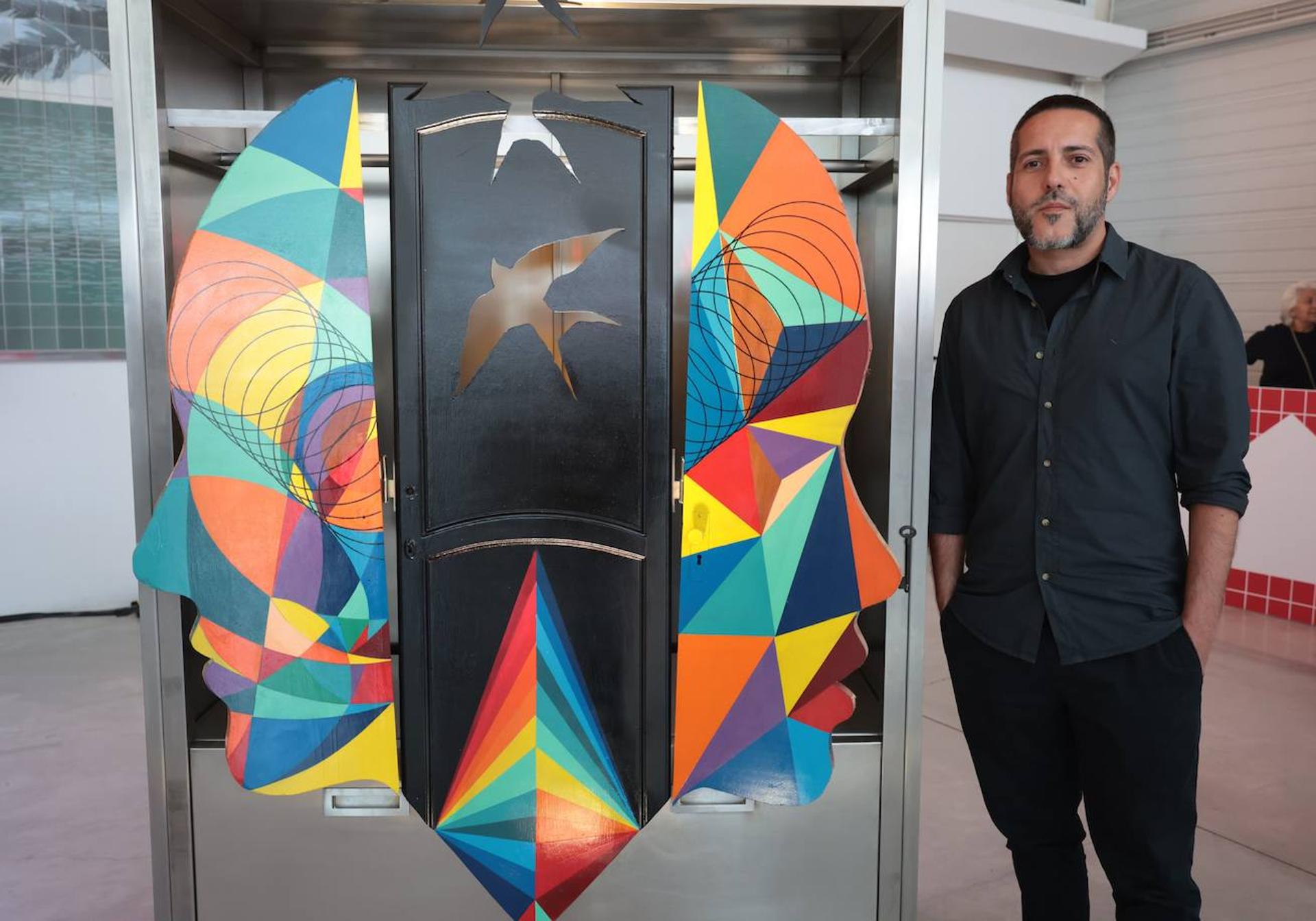
The artist brought her work La Habitación de Nobita Nobi (Nobita Nobi's Room), in which she pays homage to children's television series by putting the monkey Amedio from Marco, baby Maggie from The Simpsons, the helmet from Vicky the Viking and the popular character from Doraemon (the namesake of this canvas) all in the same room. A work that connects quickly, although with a very different message from the first glance.
"I use interior spaces that I fill with furniture and characters with friendly aesthetics, but I criticise the consumer society, and myself, because we consume so much that it renders our homes uninhabitable," explained Morata. She demonstrated her message in the painting she displayed: "From childhood, we are already consumers."
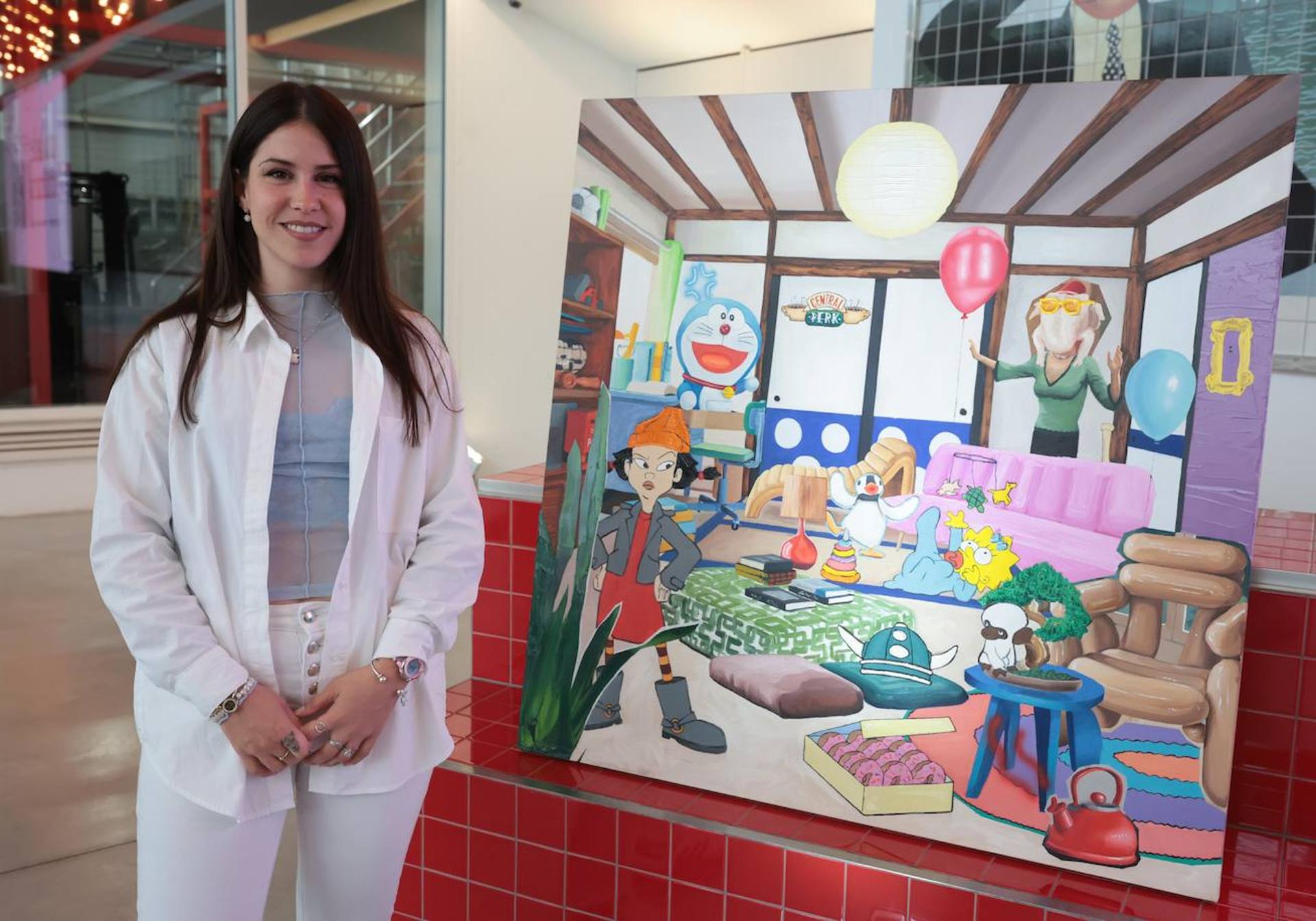
Words that gave food for thought, alongside the other works and creators that formed part of the overview of rebellious and original contemporary art in Malaga. The two-hour exhibition ended with music from DJ Miriam Jordán, while, beer in hand, the public chatted with the artists and admired their works.

